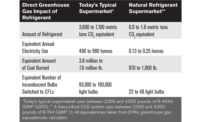When homeowners purchase a new high-efficiency HVAC system, they expect high performance. Unfortunately, the U.S. Environmental Protection Agency (EPA) estimates that more than one-half of all air conditioners in U.S. homes do not perform to their rated efficiency as a result of improper installation. Studies show that improper installation of even high-efficiency equipment can reduce performance by as much as 30 percent. This affects not only the homeowner’s utility bills, but can also result in a variety of comfort problems.
To address this problem, EPA’s Energy Star program partnered with Oncor Electric Delivery, headquartered in Dallas, to test a new HVAC Quality Installation (QI) program. The goal of the pilot program was to improve existing HVAC installation practices. To define the elements of a quality installation, EPA used the ANSI- recognized HVAC Quality Installation Specification developed by the Air Conditioning Contractors of America (ACCA). The ACCA document identifies the attributes that characterize a quality installation, as well as the acceptable procedures and documentation to demonstrate compliance.
Ted Leopkey, who oversees the EPA HVAC QI program, said, “an industry standard that defined the elements of a quality installation set the stage for the pilot program. With Oncor’s help, we took the next step and tested the requirements in the field to determine their acceptance by contractors.”
Garrey Prcin, who manages Oncor’s Installer Program, saw an easy match in the Energy Star program. “Oncor has been running an HVAC Installer Program which matched many of the requirements of the EPA’s QI program, so it was rather easy to a select a group of participating contractors, complete the additional training requirements and adjust to the EPA’s QI pilot program.”
The pilot program, conducted from May through September 2007, worked with a select group of contractors chosen to participate based on their prior performance and commitment to the goals of the recommended QI practices. These Texas contractors included AirRite (Fort Worth), Stark Air (Hurst), Tempo Air (Irving), and Total Heat and Air (Plano). Tradewinds Appropriate Technologies (Waco) was selected as the third-party independent verifier to provide quality assurance for the pilot program. These contractors not only participated in the pilot, but devoted a great deal of staff time and provided essential feedback on the program’s design.
The EPA/Oncor HVAC QI pilot program covered five main areas:
• Proper sizing of equipment and component matching;
• Ensuring correct refrigerant charging;
• Ensuring adequate airflow to match refrigerant capacity;
• Sealing ducts to minimize leaks; and
• Verifying QI installation in the field.
Once each installation was verified, customers received an Energy Star certificate acknowledging that their system met Energy Star HVAC QI guidelines.
The results of the pilot program helped shed light on several important aspects of HVAC QI:
• While proper sizing and correct charging were standard practice for the contractors participating in the pilot, an organizational commitment to training technicians and sales staff, and maintaining proper tool calibration schedules, are essential.
• To ensure adequate airflow in a replacement system, the duct distribution system must be sized properly. In some cases, contractors may need to make additional system modifications, such as adding return duct capacity.
• Duct sealing can often provide significant savings to the homeowner, but documenting and verifying improvements requires an investment in test equipment.
According to Larry Taylor of AirRite, “even though these installs required additional time and effort, the positive results to AirRite have more than offset the additional efforts and cost. In tracking these jobs we have had zero callbacks and many customer referrals that have lead to additional sales.”
EPA is currently recruiting utility program partners to implement the Energy Star HVAC QI program in additional markets. For more information, contact Ted Leopkey at 202-343-9659 or leopkey.ted@epa.gov.
Publication date:07/21/2008
Copyright ©2024. All Rights Reserved BNP Media.
Design, CMS, Hosting & Web Development :: ePublishing





